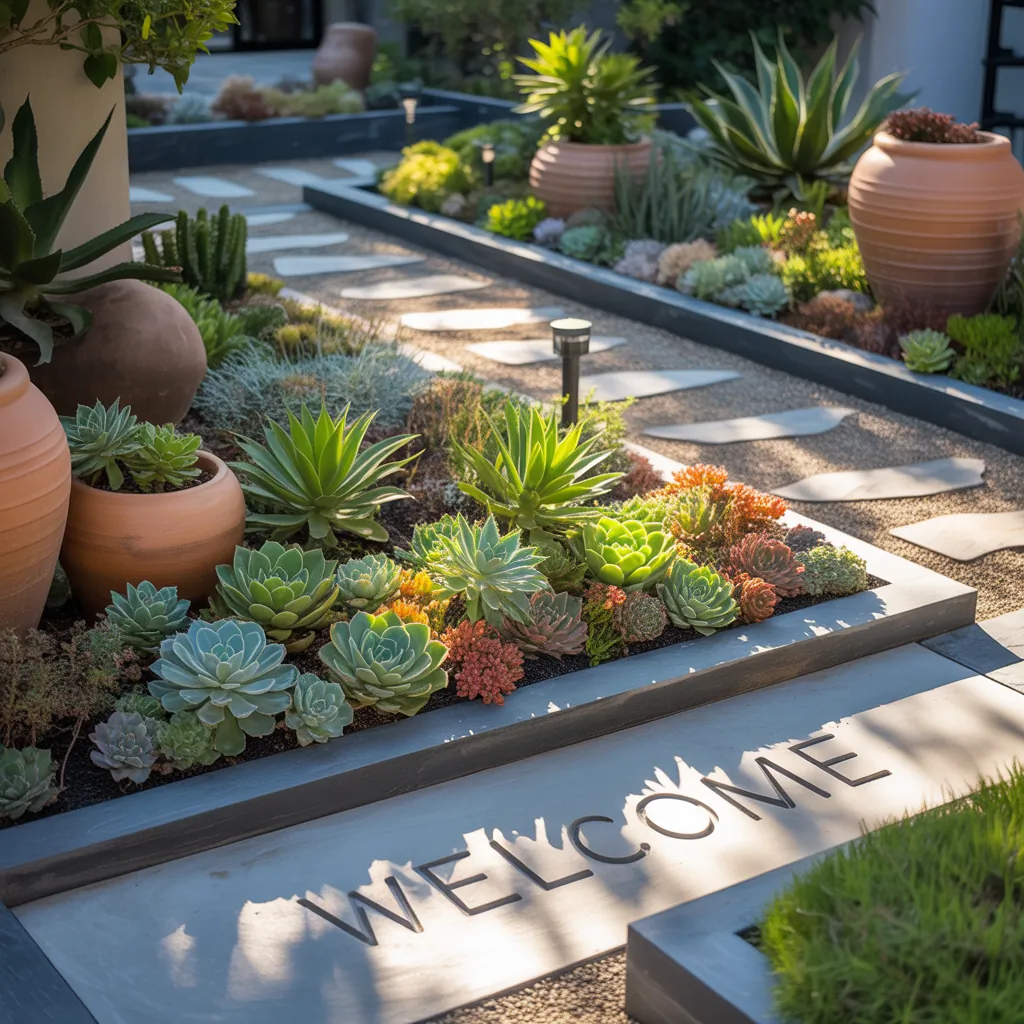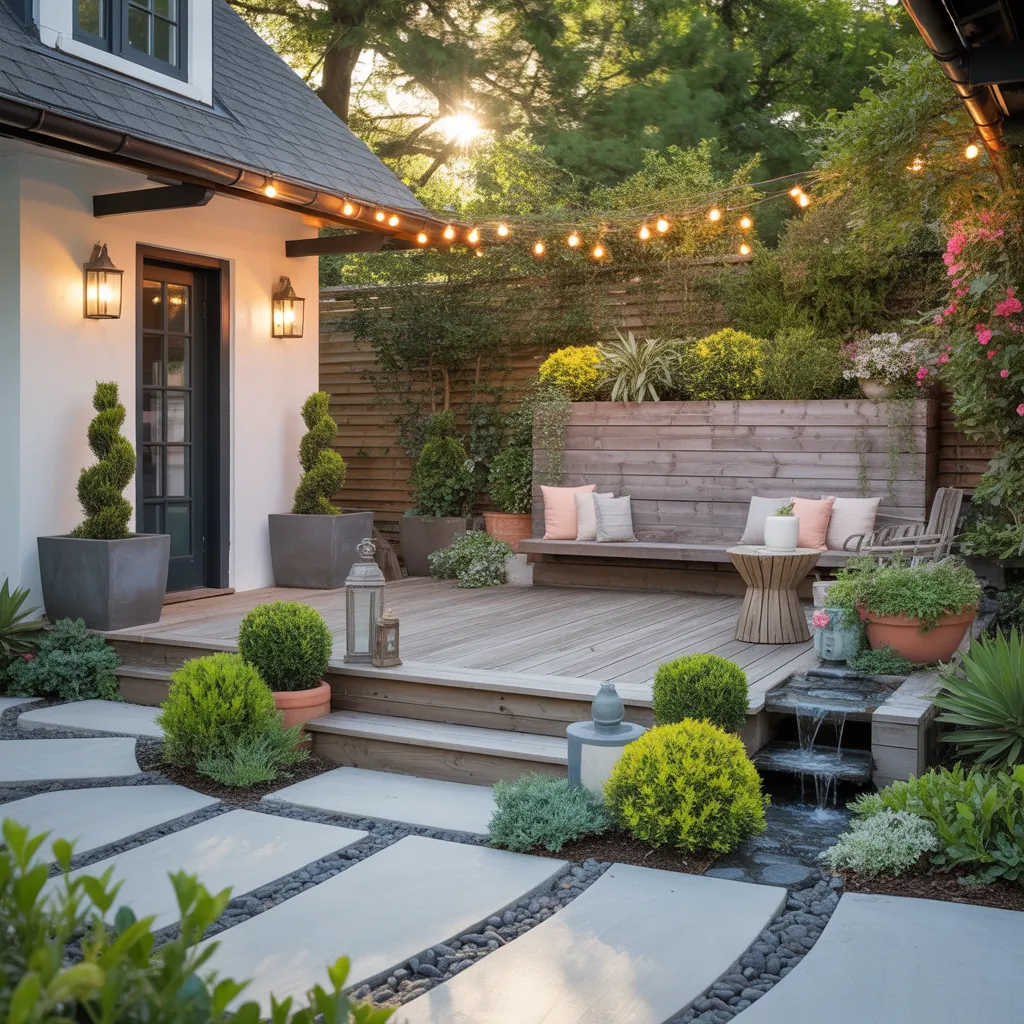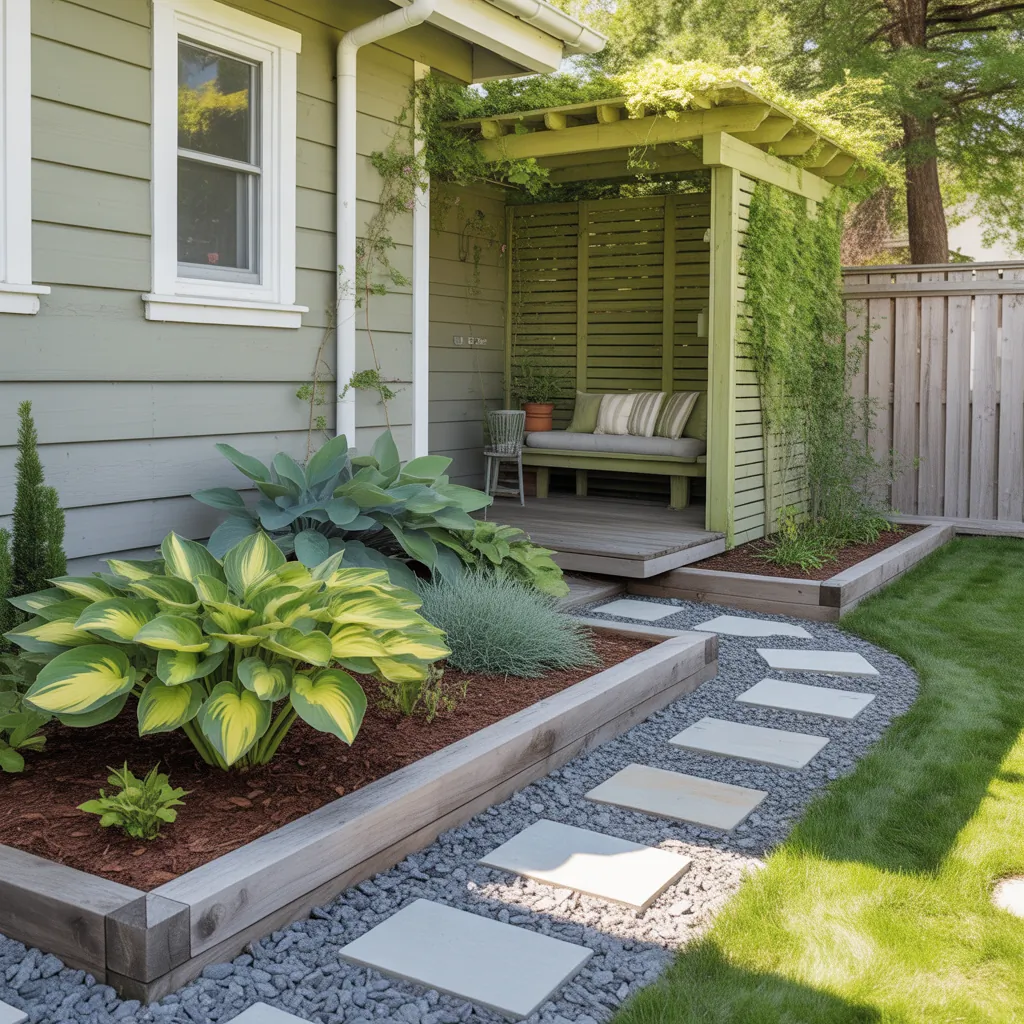Have you ever stood on your front porch wishing your yard looked intentional but felt overwhelmed by watering schedules, mowing, and high-maintenance flower beds? If so, a front yard succulent garden outdoor makeover might be the perfect low-water, high-style solution. In this guide I’ll walk you through planning, planting, and maintaining a drought-tolerant succulent landscape that boosts curb appeal and fits a weekend DIY timeline.
Why choose a succulent front yard? Benefits of succulents for curb appeal
Succulents are ideal for homeowners who want attractive, resilient landscaping without constant upkeep. Benefits include:
- Drought-tolerant and water-wise — great for xeriscaping
- Low maintenance — minimal pruning and infrequent watering
- Design versatility — from modern minimalist rock gardens to cottage-style containers
- Long-lasting — many succulents thrive for years and propagate easily
- Deer- and rabbit-resistant options available
Plan your front yard succulent garden outdoor
Before you dig, create a simple plan. Good planning prevents common mistakes like poor drainage and overcrowding.
Assess site conditions
- Sun: Most succulents prefer 4–6 hours of sun. Note morning vs. afternoon sun.
- Soil and drainage: Succulents need fast-draining soil—avoid low spots that hold water.
- Climate zone: Choose frost-tolerant succulents if you get freezes.
- Scale: Measure the area and sketch a layout to visualize plant spacing and hardscape.
Design ideas and long-tail inspirations
Use one of these themes to guide plant and material choices:
- Modern minimalist: geometric beds, white gravel, architectural succulents like agave and aeonium.
- Mediterranean rock garden: terracotta pots, lavender accents, sedum and sempervivum clusters.
- Pathway border: low-growing succulents flanking a paver path for a tidy, low-maintenance walk.
- Mixed container display: group succulents in varying pot sizes for instant height and texture.
Front yard succulent garden outdoor: step-by-step installation
This practical 6-step DIY plan gets you from blank patch to beautiful front yard in a weekend (or over a few weekends for larger projects).
Materials and tools
- Succulent and cactus potting mix (or mix your own: 2 parts potting soil + 1 part coarse sand + 1 part perlite)
- Succulent plants (choose a mix of heights and textures)
- Landscape fabric, decorative gravel, river rock, or mulch
- Edging material (steel, stone, or pavers)
- Basic tools: shovel, rake, hand trowel, gloves, wheelbarrow
- Drip irrigation kit or soaker hose (optional but recommended)
Step-by-step
- Clear the area: Remove turf, weeds, and debris. Mark bed edges.
- Improve drainage: If soil is heavy clay, add coarse sand and organic matter or create raised beds.
- Lay landscape fabric (optional): Reduces weeds while allowing water to drain.
- Add base material: Spread a 2–3 inch layer of coarse gravel or decomposed granite for drainage and a finished look.
- Plant succulents: Dig holes slightly wider than the root ball, space according to mature size, and group by water needs.
- Top dress: Use decorative gravel, small rocks, or mulch to hold soil in place and create contrast.
- Install irrigation: Add a drip system on a timer for consistent, deep watering during establishment.
Best succulent plants for an outdoor front yard
Mix textures, colors, and heights. Consider these reliable outdoor succulents:
- Agave: architectural focal points
- Aeonium: rosettes with dramatic color
- Sempervivum (hens & chicks): great for groundcover and rock gardens
- Sedum (stonecrop): low-growing accents and seasonal blooms
- Echeveria: soft rosettes for containers and borders
- Opuntia (prickly pear): hardy, sculptural in warmer zones
Grouping and spacing tips
Plant in odd-numbered clusters (3s or 5s) for natural composition. Allow extra space for slow growers and group plants with similar sunlight and water needs together.
Maintenance: keep your outdoor succulent garden thriving
One of the major perks of a front yard succulent garden outdoor is minimal upkeep, but a little care goes a long way.
- Watering: Deep but infrequent—establish with weekly watering for the first month, then taper to every 2–4 weeks depending on heat and rainfall.
- Fertilizing: Feed lightly in spring with a balanced, low-nitrogen fertilizer or a cactus fertilizer once a season.
- Pruning and propagation: Remove dead leaves and propagate offsets to fill gaps.
- Winter care: Protect tender succulents with frost cloth or move containers indoors in cold climates.
- Pest control: Watch for mealybugs and scale; treat with rubbing alcohol or insecticidal soap.
Design inspo: real-world ideas to copy
Here are three approachable setups you can replicate:
- Driveway flanks: Line the driveway with low sedum and sempervivum for tidy, evergreen interest.
- Staircase accent: Use a mix of taller agave and lower echeveria around entry steps for a layered look.
- Container cluster: Create a focal point with three terra cotta pots of varying heights grouped near the door.
Frequently Asked Questions
1. Are succulents good for full sun in the front yard?
Many succulents thrive in full sun, but some prefer morning sun and afternoon shade. Harden plants gradually to prevent sunburn—start them in partial shade for a few weeks before moving into full sun.
2. How often should I water an outdoor succulent garden?
Water deeply but infrequently. Newly planted succulents need weekly watering for the first month. Once established, most outdoor succulents are fine with watering every 2–4 weeks depending on temperature, rainfall, and soil drainage.
3. Can I convert my lawn to a succulent garden?
Yes. Remove sod, improve drainage, and follow the installation steps above. For best results, plan the layout, amend soil, and use landscape fabric or gravel to suppress weeds.
Common problems and quick fixes
- Root rot: Caused by overwatering—cut back watering and lift affected plants to let roots dry.
- Leggy growth: Increase sunlight and remove weak growth; propagate healthy tops.
- Frost damage: Cover plants or move containers indoors during freezes.
Ready to transform your yard? A front yard succulent garden outdoor delivers dramatic curb appeal with little water and ongoing effort. Gather your tools, sketch a simple plan, and try a small section first—then expand as you gain confidence.
Want more hands-on projects? Check out our DIY projects page for step-by-step weekend builds, or browse home design ideas for styling and layout inspiration. If you’re tackling a bigger renovation, see how a garden upgrade pairs with interior updates like kitchen upgrades.
Conclusion
Designing and installing a front yard succulent garden outdoor is an achievable, rewarding DIY that increases curb appeal, lowers water use, and gives you a beautiful, low-maintenance landscape. Start small, plan wisely, and enjoy the textures and colors succulents bring to your home’s exterior. Ready to get started? Grab a shovel, pick your favorite succulents, and make your front yard the neighborhood standout.
Call to action: Share your before-and-after photos or questions in the comments, or try one small succulent bed this weekend and link back to our DIY projects for more tips.



